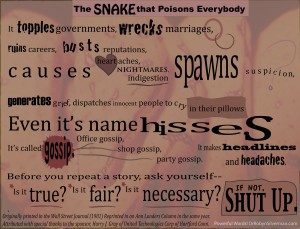The Courage to Try: 7 Vital Tips to Help Your Kids Try New Things Even if They Are Scared
It was my 7-year-old daughter’s very first camp overnight. She was nervous, scared, excited and anxious.
Each night, before bed, she would start a looping monologue.
“I’m really scared about the sleepover…I’m going to miss you…what if I want to go home…what if I have to go to the bathroom…what if I’m scared?”
“Do you want to go on this sleepover?”
“Yes. But I’m really scared about the sleepover…”
This was getting us nowhere. Have you ever felt like that?
The truth was, we hadn’t had a great track record. Her first sleepover at Grammie’s last year ended abruptly with an ear infection and a fever. The second one took two takes—she came home before sleeping and after a pep talk about fear, she went back but I was there to tuck her in and sing her goodnight. And last weekend, her sweet friend from camp came over to our house to do a practice sleepover and wound up going home at 12:45am because she missed her mom and had a tummy ache. Sleepovers had not been the picture of success.
It’s hard when we want our child to try new things but fear has taken hold and won’t let go. So how can we help our children help themselves when trying constructive, new things that excite but scare them?
- Note the time: If your child is extremely tired, this might not be the best time to have a serious conversation about fear. Brains are exhausted from a full day of work, play, school, camp, friends and activities by the time nighttime rolls around. You can say; “I know you are nervous about X and I’m happy to talk about it with you. Right now it’s very late. How about we talk about it in the morning when your brain is fresh and you’ve had a good night’s sleep?” Of course, if your child is staying up nights thinking about what it making him or her nervous, you may need to talk about it a bit. Often though, simply saying; “Your feelings are important. We will figure this out together. Let’s talk about it tomorrow when exhaustion is not in the driver’s seat of your brain” can be enough.
- Help your child realize that s/he is in the driver’s seat: I love what Elizabeth Gilbert said in her “Letter to Fear.” “Dearest Fear: I recognize and respect that you are part of this family, and so I will never exclude you from our activities, but still – your suggestions will never be followed. You’re allowed to have a seat, and you’re allowed to have a voice, but you are not allowed to have a vote. You’re not allowed to touch the road maps; you’re not allowed to suggest detours; you’re not allowed to fiddle with the temperature. Dude, you’re not even allowed to touch the radio. But above all else, my dear old familiar friend, you are absolutely forbidden to drive.” It’s vital that our children feel a sense of ownership when it comes to their feelings and their choices. I told my own daughter a rendition of this letter, changing it to fit a child’s language and development. It gave her the words as well as a specific mantra. Now she echoes back to me; “Mommy! I didn’t allow fear to drive my bus!”
- Ask; what will make you feel more calm and less scared? When you ask this question, it allows your child to be
 proactive about what will help them rather than focus on the problems. This was the key to the overnight experience for us. Tallie decided that sleeping next to one of her counselors would help. I wrote a note to one of the staff members that said; “Tallie has a question for Amanda” but did not provide the question itself. I had told my daughter; “I will send the reminder but you need to ask the question. I won’t do it for you. I believe that you can do it yourself.” It’s important for children to learn to speak up for themselves even if they need a reminder or encouragement to do so. There is something empowering about saying the words yourself and hearing the answer with your own ears. When Tallie came home, she was happy to announce that she would be sleeping next to Amanda.
proactive about what will help them rather than focus on the problems. This was the key to the overnight experience for us. Tallie decided that sleeping next to one of her counselors would help. I wrote a note to one of the staff members that said; “Tallie has a question for Amanda” but did not provide the question itself. I had told my daughter; “I will send the reminder but you need to ask the question. I won’t do it for you. I believe that you can do it yourself.” It’s important for children to learn to speak up for themselves even if they need a reminder or encouragement to do so. There is something empowering about saying the words yourself and hearing the answer with your own ears. When Tallie came home, she was happy to announce that she would be sleeping next to Amanda. - Have your child write down his/her questions—and ask them:Still, Tallie was nervous. She was filled with
 questions. What if she needed to go to the bathroom in the middle of the night? Would there be a nightlight? And the most looming concern– What if sleeping next to her counselor didn’t help? I had her take out a piece of paper and write down her questions. She penned them out herself right at our kitchen table, we put them in an envelope and she brought them in on the day of the big overnight meeting with her group and counselors. That afternoon, I got this email from her division head: “Tallie was so articulate at our meeting about the overnight tomorrow. She asked all of her questions clearly and followed the directions of waiting until the end of the meeting for the Q & A part before raising her hand. I was so very impressed and told her so!” Tallie came home feeling knowledgeable and certain about what to expect on her overnight. She was learning a valuable lesson—she could ask questions, get answers and ease her fears with the knowledge she gained.
questions. What if she needed to go to the bathroom in the middle of the night? Would there be a nightlight? And the most looming concern– What if sleeping next to her counselor didn’t help? I had her take out a piece of paper and write down her questions. She penned them out herself right at our kitchen table, we put them in an envelope and she brought them in on the day of the big overnight meeting with her group and counselors. That afternoon, I got this email from her division head: “Tallie was so articulate at our meeting about the overnight tomorrow. She asked all of her questions clearly and followed the directions of waiting until the end of the meeting for the Q & A part before raising her hand. I was so very impressed and told her so!” Tallie came home feeling knowledgeable and certain about what to expect on her overnight. She was learning a valuable lesson—she could ask questions, get answers and ease her fears with the knowledge she gained. - Calm your own nerves: It’s normal to feel nervous about your child’s firsts—especially when your child is nervous too! I couldn’t help but wonder what I was going to do if the camp called at night telling me I needed to pick up my petrified child given that my husband was on a business trip and my son would be sleeping. So, I called in the reinforcements: my neighbor and two friends. If I needed to pick up my daughter, one of them would come over and sit in the house until I came back. Aside from that, I spoke to my friends about my concerns. It’s important to talk it out with those you trust so that you feel comforted and your fears don’t come out while encouraging your child. Talk, exercise, have lunch with a friend, do yoga. Calming your own nerves is vital if you are to calm someone else’s at the same time!
- Realize the preparation and the problem-solving is part of the win: While we all want our children to have the win of actually facing their fear and seeing the end of their journey, there are plenty of wins to celebrate before the end. The process of facing your fear instead of simply turning your back and saying “I won’t do it” is a great exercise—and it’s progress! My daughter went from declaring “I won’t go on the overnight” to “I want to go but I’m scared.” That’s a win! She went from “I’m scared” to “I’ll ask my questions and ask for what I need to feel more calm and less scared.” That’s a win! Even if she didn’t sleep over in the end, she had made progress.
- Celebrate the wins and connect it to your child’s character: Who had your child needed to “be” in order to face his or her fears and come out on top? Whether they took a few steps forward or they went all the way through the fear and came out the other side, this took courage. You can say, for example; “One thing I know about you now is that you have the courage to look fear in the face, ask the questions you needed to, make sound decisions based on what you heard and get out of your comfort zone. I am proud of you—but I hope that you are proud of yourself. I believe in you but more importantly, I hope you now see that you can believe in yourself. You are courageous and strong and you showed incredible gumption. Way to go!”
- As it turns out, my daughter made it! I received an email from the person in charge who said;
“You can be very proud of your daughter. She was a total super star on the overnight. She was an excellent listener and was very respectful when we said it was time to turn out the lights and get into sleeping bags. She has a blast swimming in the lake and jumping on the water tramp and was very excited about the ice cream bar! She did it!!”
 Yes she did. She worked the plan and she did it. And this experience will become evidence that she can do many other nerve-wracking but exciting firsts in her life. Of course, it wasn’t perfect. I mean, this proud, grimy, totally exhausted girl came off the bus wearing an enormous t-shirt saying “I survived the sleepover” as she alternated between smiles and tears. But fighting fears is messy. It’s not perfect. It can take everything out of you just as it builds you up. And all of it sure is tiring.
Yes she did. She worked the plan and she did it. And this experience will become evidence that she can do many other nerve-wracking but exciting firsts in her life. Of course, it wasn’t perfect. I mean, this proud, grimy, totally exhausted girl came off the bus wearing an enormous t-shirt saying “I survived the sleepover” as she alternated between smiles and tears. But fighting fears is messy. It’s not perfect. It can take everything out of you just as it builds you up. And all of it sure is tiring.
When we give children the tools to empower themselves, they can do much more than they ever thought they could—and perhaps more than you thought they could too.
Here’s to many more courageous acts and exciting firsts!





 The first time your child lies to you can be a shock to any parent. And while lying is part of growing up, we don’t want to encourage the behavior. Our children need to learn right from wrong, reality from fantasy and truth from untruth.
The first time your child lies to you can be a shock to any parent. And while lying is part of growing up, we don’t want to encourage the behavior. Our children need to learn right from wrong, reality from fantasy and truth from untruth.
 It may seem counter-intuitive, but kids need to fall on their face a lot during childhood. It’s part of learning.
It may seem counter-intuitive, but kids need to fall on their face a lot during childhood. It’s part of learning. My hope is that we all open our hearts and our homes to those who are still in need. Do what you can even if it’s small– donate, lend out generators or extension cords, invite people over for dinner and to stay the night. That’s been our plan of action as our power has been restored (thankfully) and we only had 2 fallen trees and some fence damage. We consider ourselves very lucky– and hope for the safety and quick recovery of those still dealing with the aftermath of Hurricane Sandy.
My hope is that we all open our hearts and our homes to those who are still in need. Do what you can even if it’s small– donate, lend out generators or extension cords, invite people over for dinner and to stay the night. That’s been our plan of action as our power has been restored (thankfully) and we only had 2 fallen trees and some fence damage. We consider ourselves very lucky– and hope for the safety and quick recovery of those still dealing with the aftermath of Hurricane Sandy.

 (2) Adults can’t fix what they don’t know how to fix: Clearly solutions are complex and can’t be generalized from one student to the next. Eliminating or reducing bullying is not a one size fits all exercise. Still, we can hear the frustration of the administrator at the Sioux City, Iowa where Alex Libby attends. She whispers to herself in the hallway; “How do I fix this? How do I fix this?” as loudly as her non-committal promise to Alex’s exasperated parents; “We will take care of this.” How can she take care of what she doesn’t know how to fix? Continued education on the part of educators and administrators is necessary in areas where they quite obviously are deficient in knowledge and skill.
(2) Adults can’t fix what they don’t know how to fix: Clearly solutions are complex and can’t be generalized from one student to the next. Eliminating or reducing bullying is not a one size fits all exercise. Still, we can hear the frustration of the administrator at the Sioux City, Iowa where Alex Libby attends. She whispers to herself in the hallway; “How do I fix this? How do I fix this?” as loudly as her non-committal promise to Alex’s exasperated parents; “We will take care of this.” How can she take care of what she doesn’t know how to fix? Continued education on the part of educators and administrators is necessary in areas where they quite obviously are deficient in knowledge and skill. (5) Effectiveness can’t be assumed: When Alex was asked if he trusts the school officials to take care of the problems, he very clearly says that he had reported that a child “had sat on my head” and nothing was done. The school official balks at his accusation and tells him that she did indeed talk to the boy and “he didn’t do that again, did he?” Of course the boy terrorized Alex in different ways. You definitely got the feeling that school officials wanted so badly to hear that things were fine that they didn’t investigate whether or not they were indeed resolved. Ignorance might be bliss but it’s not effective in counteracting bullying. The school official never followed up with Alex to see how effective her discussion was or to ensure Alex that his words did not fall on deaf ears.
(5) Effectiveness can’t be assumed: When Alex was asked if he trusts the school officials to take care of the problems, he very clearly says that he had reported that a child “had sat on my head” and nothing was done. The school official balks at his accusation and tells him that she did indeed talk to the boy and “he didn’t do that again, did he?” Of course the boy terrorized Alex in different ways. You definitely got the feeling that school officials wanted so badly to hear that things were fine that they didn’t investigate whether or not they were indeed resolved. Ignorance might be bliss but it’s not effective in counteracting bullying. The school official never followed up with Alex to see how effective her discussion was or to ensure Alex that his words did not fall on deaf ears.